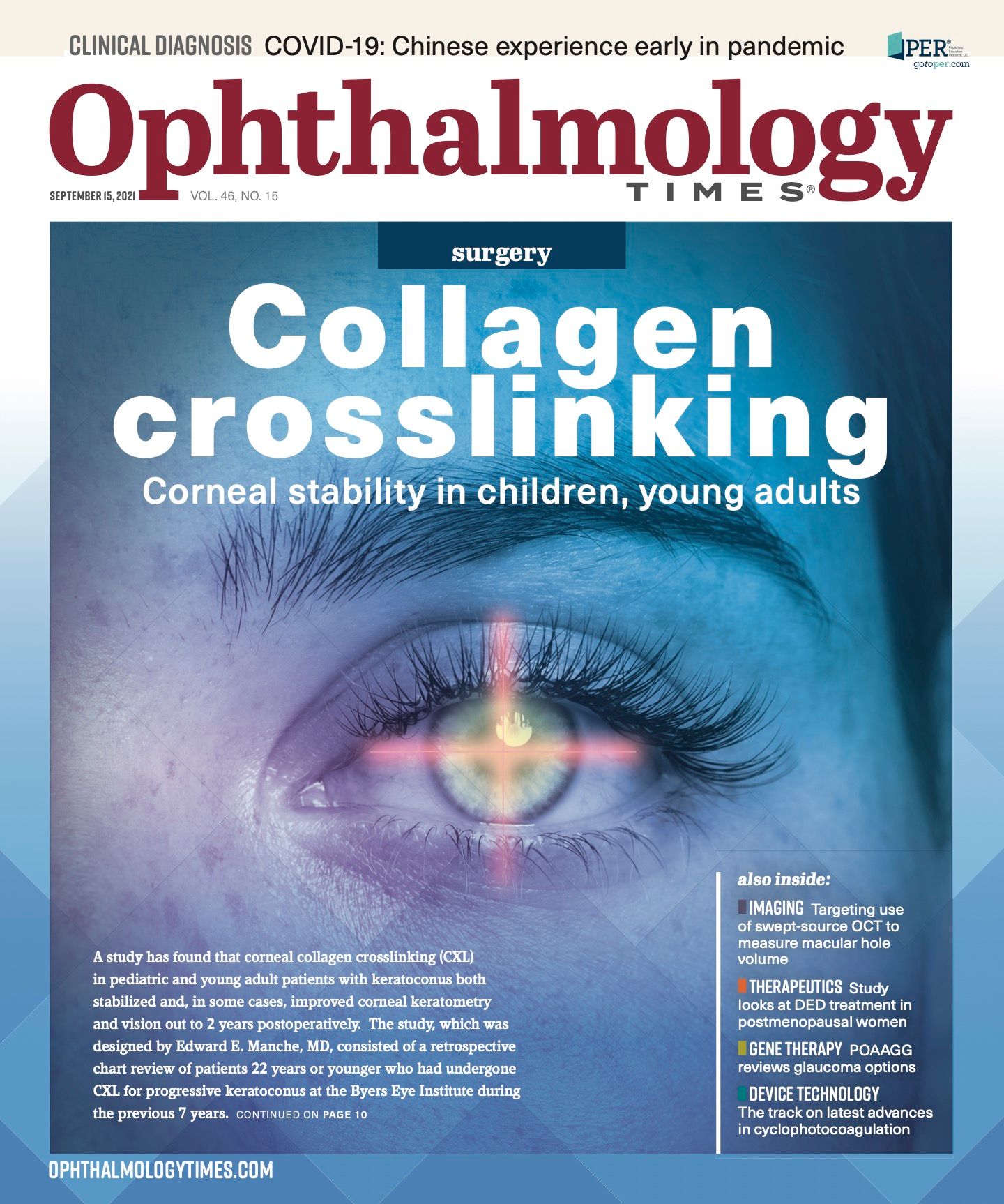- COVID-19
- Biosimilars
- Cataract Therapeutics
- DME
- Gene Therapy
- Workplace
- Ptosis
- Optic Relief
- Imaging
- Geographic Atrophy
- AMD
- Presbyopia
- Ocular Surface Disease
- Practice Management
- Pediatrics
- Surgery
- Therapeutics
- Optometry
- Retina
- Cataract
- Pharmacy
- IOL
- Dry Eye
- Understanding Antibiotic Resistance
- Refractive
- Cornea
- Glaucoma
- OCT
- Ocular Allergy
- Clinical Diagnosis
- Technology
Study targets dry eye disease in postmenopausal women
Investigators find that estradiol drops can ease signs and symptoms of DED.


Reviewed by Gerhard Garhöfer, MD
A novel treatment for dry eye disease (DED) in the form of a topical formulation of estradiol drops can reduce signs and symptoms of DED in postmenopausal women for at least 3 months.
Gerhard Garhöfer, MD, served as lead investigator in a study of the treatment. He is an associate professor at Medical University of Vienna, Department of Clinical Pharmacology, Vienna, Austria.
Related: Optimizing the management of DED
“Sex hormone receptors or estrogen receptors have been found to be present on the ocular surface in several tissues, such as the conjunctiva, cornea, and Meibomian glands,” Garhöfer said. “The pronounced contrast in dry eye prevalence between men and women, especially women who are postmenopausal, points toward an involvement of sex hormones in the disease process. Furthermore, antiestrogen treatment seems to disrupt tear production.”
The therapeutic formulation used in the randomized, controlled, parallel-group study was RP101, which contains 17-beta-estradiol as the active ingredient and a sterile isotonic thermogelling (IntelliGel) solution as the drug delivery system.
This thermosensitive, supramolecular hydrogel becomes a gel at eye temperature, allowing for a long period of residency on the ocular surface and thus permitting sustained drug delivery.
The study aimed to determine the optimal dose regimen of RP101 and to evaluate its safety in postmenopausal women with moderate-to-severe DED.
The 4 arms of the study included 0.05% twice daily, 0.1% morning and vehicle (isotonic thermogelling solution) in the evening, 0.1% twice daily, and a control group who received the vehicle twice daily. The treatment period was 3 months.
Related: Risuteganib for DED: Promising treatment with increased TBUT, low staining scores
Investigators used Schirmer Test II and grading of corneal fluorescein staining, taking measurements at baseline and at various points during treatment: day 14, day 30, day 60, and day 90 (treatment completion).
Patients reported outcomes for various DED symptoms via the Symptom Assessment Questionnaire iN Dry Eye (SANDE) and the visual analog scales (VAS).
Garhöfer and coinvestigators enrolled 104 patients in the study, with 77 completing the study according to the protocol.
Five patients requested withdrawal, 21 withdrew due to adverse events, and 1 withdrew for other reasons.
Corneal fluorescein staining score significantly decreased during the 3-month treatment period (P < 0.001 vs baseline). Investigators found no significant difference between treatment groups.
Related: Eye Care Products in the Pipeline for Dry Eye Disease
The staining of the inferior cornea, however, showed a significantly more pronounced reduction in the highest dose group compared to vehicle, P = 0.0463.
The Schirmer II Test showed an increase in tear production, reaching maximum effect after 90 days of treatment.
“Schirmer Test II increased significantly after 14 days of treatment in the active groups and after one month of treatment in the control group and remained significantly elevated until the end of the study,” Garhöfer explained.
The SANDE symptom score, a frequently used standardized questionnaire for the assessment of severity and frequency of dry eye symptoms, showed a decrease at the end of the treatment period in all groups.
Moreover, patient-reported outcome via VAS in all four treatment arms showed a decrease in symptoms of DED, such as foreign body sensation, burning/stinging, itching, pain, sticky feeling, redness, and tearing.
Related: Optimizing Adherence to Therapies for Dry Eye Disease
The topical RP101 eye drops were well tolerated on the ocular surface and showed a favorable safety profile.
“Most treatment-related adverse events were eye related and mostly mild or moderate,” Garhöfer said. “The most frequent adverse events (more than 5% in at least 1 treatment group) were blurred vision, eye pain, eye irritation, ocular hyperemia, eyelid swelling, or foreign body sensation. All these adverse events had resolved at the end of the study.”
At this time, therapy data are limited to use in postmenopausal women, according to Garhöfer.
“Further studies are needed to investigate whether other target populations would benefit from topical estrogen treatment," he said.
The next step will be a phase 3 study, with a larger population than that in phase 2, the basis of which will be the data obtained from the phase 2 study, Garhöfer added.
“Our data show that all dosages of RP101 were safe and improved signs and symptoms of DED at the end of the observation period,” he said. “We think the topical approach would make the most sense in dry eye patients, as it can reach higher levels on the ocular surface while not needing high plasma levels, which would be the case when estrogen is given systemically.”
Related: In-Office Procedures Used to Treat Dry Eye Disease
Garhöfer did point out that the thermosensitive hydrogel solution, which served as a control in the study, also had an impact on signs and symptoms of DED.
Systemic estrogen is not a preferred option to treat DED in postmenopausal women because it has been linked to serious systemic adverse effects in patients, noted Garhöfer, who also concluded that “with a topical formulation, systemic uptake of estradiol is very low, which limits the risk of systemic adverse effects.”
---
Gerhard Garhöfer, MD
E: gerhard.garhoefer@meduniwien.ac.at
This article is based on Dr Garhöfer’s presentation at the annual meeting of the Association for Research in Vision and Ophthalmology. Dr Garhöfer has no financial disclosures to declare related to this content.

